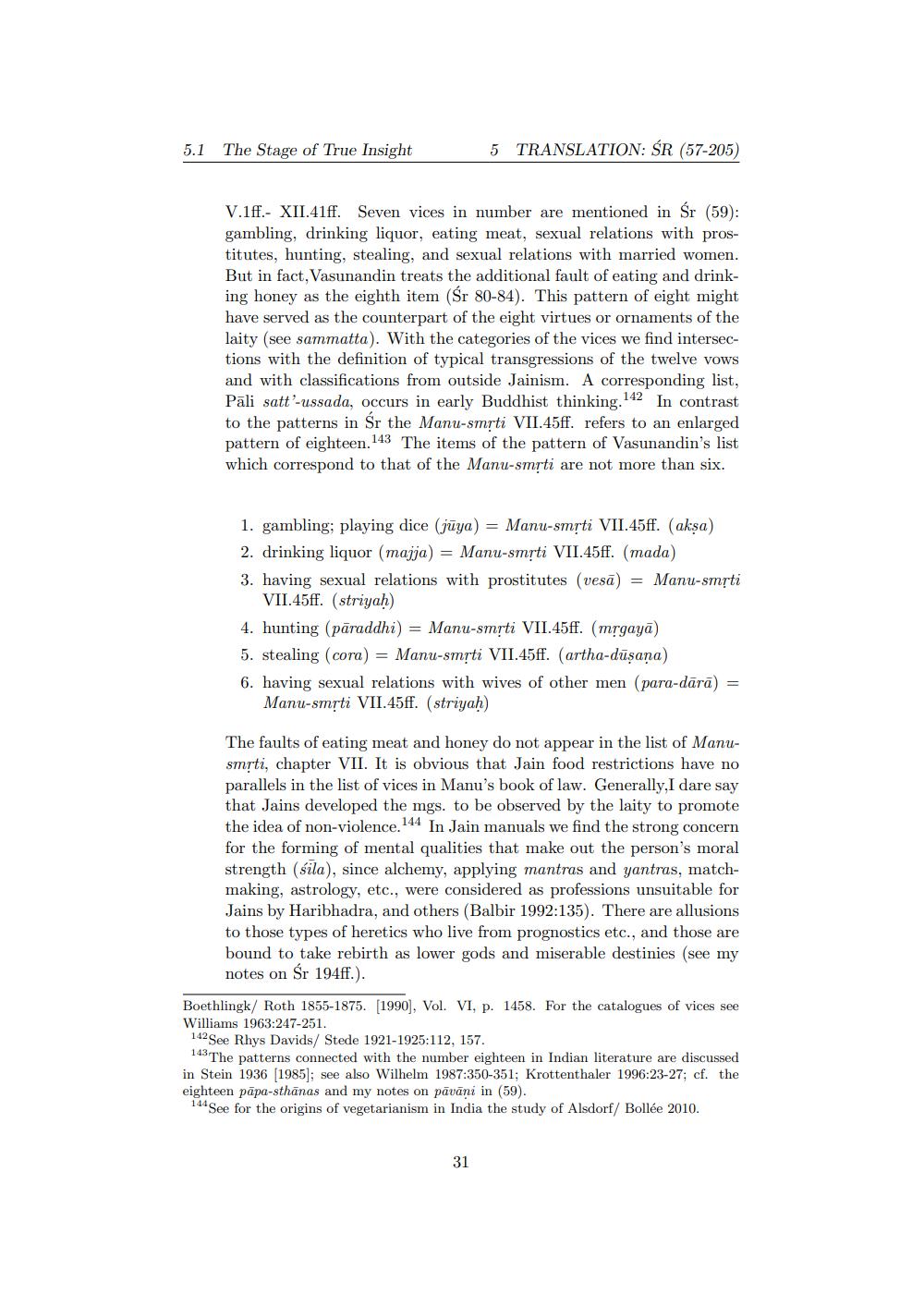________________
5.1
The Stage of True Insight
5 TRANSLATION: ŚR (57-205)
V.1ff.- XII.41ff. Seven vices in number are mentioned in Śr (59): gambling, drinking liquor, eating meat, sexual relations with prostitutes, hunting, stealing, and sexual relations with married women. But in fact, Vasunandin treats the additional fault of eating and drinking honey as the eighth item (Sr 80-84). This pattern of eight might have served as the counterpart of the eight virtues or ornaments of the laity (see sammatta). With the categories of the vices we find intersections with the definition of typical transgressions of the twelve vows and with classifications from outside Jainism. A corresponding list, Pāli satt-ussada, occurs in early Buddhist thinking. 142 In contrast to the patterns in Sr the Manu-smrti VII.45ff. refers to an enlarged pattern of eighteen. 143 The items of the pattern of Vasunandin's list which correspond to that of the Manu-smrti are not more than six.
1. gambling; playing dice (jūya) = Manu-smrti VII.45ff. (aksa) 2. drinking liquor (majja) = Manu-smrti VII.45ff. (mada) 3. having sexual relations with prostitutes (vesā) = Manu-smrti
VII.45ff. (striyah) 4. hunting (pāraddhi) = Manu-smrti VII.45ff. (mrgayā) 5. stealing (cora) = Manu-smrti VII.45ff. (artha-dūsana) 6. having sexual relations with wives of other men (para-dārā) =
Manu-smsti VII.45ff. (striyah)
The faults of eating meat and honey do not appear in the list of Manusmrti, chapter VII. It is obvious that Jain food restrictions have no parallels in the list of vices in Manu's book of law. Generally, I dare say that Jains developed the mgs. to be observed by the laity to promote the idea of non-violence.144 In Jain manuals we find the strong concern for the forming of mental qualities that make out the person's moral strength (sila), since alchemy, applying mantras and yantras, matchmaking, astrology, etc., were considered as professions unsuitable for Jains by Haribhadra, and others (Balbir 1992:135). There are allusions to those types of heretics who live from prognostics etc., and those are bound to take rebirth as lower gods and miserable destinies (see my notes on Śr 194ff.).
Boethlingk/ Roth 1855-1875. (1990), Vol. VI, p. 1458. For the catalogues of vices see Williams 1963:247-251.
142 See Rhys Davids/ Stede 1921-1925:112, 157 "The patterns connected with the number eighteen in Indian literature are discussed in Stein 1936 (1985); see also Wilhelm 1987:350-351; Krottenthaler 1996:23-27; cf. the eighteen pāpa-sthānas and my notes on pāvani in (59). 144 See for the origins of vegetarianism in India the study of Alsdorf/ Bollée 2010.




